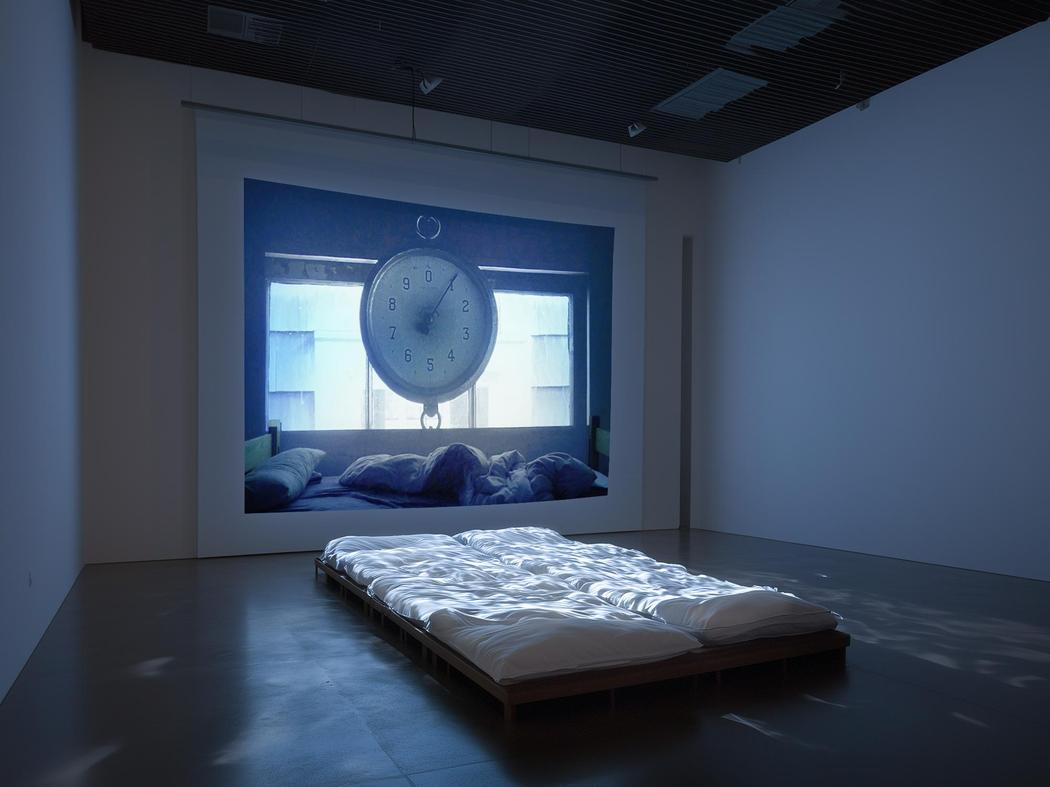Jingyi Zhang
Where do you live: New York/ Beijing
Your education: MA in Emergent Media, Columbia University School of the Arts
Describe your art in three words: Dreamcore/Alienated/ Elemental media
Your discipline: Photography/ Video Installation / Interactive Design
Website | Instagram
 Jingyi Zhang | Yugua Island | 2024
Jingyi Zhang | Yugua Island | 2024
Your practice blends photography, moving images, and interactive design. How do you decide which medium best conveys a particular concept?
I believe it depends on what I want to express: photography helps me convey fragmented emotions; moving images allow me to tell a more complete story and offer a kind of freedom and fluid format compared to traditional films or shorts. Interactive design makes me consider the user experience and the technical expression of the work. I don’t limit myself to any single medium—I like to use them flexibly and bring out the greatest potential of each. I also really enjoy the process of multimedia storytelling.
Many of your works use natural objects as metaphors. What draws you to nature as a visual and symbolic language?
To me, nature represents an innate human attribute. Humans are born from nature and transform it into various forms for different purposes. Exploring natural objects goes beyond their materiality; it is also about uncovering the human psychology and subconscious behind them. Humans unconsciously project emotions onto these objects, creating beautiful and sensible connections.
Having exhibited in the USA, China, Japan, and Brazil, have you noticed differences in how audiences from different cultures respond to your art?
Originally, I thought my Asian background and artistic style might resonate more strongly with Asian audiences, and that responses would vary across different countries and regions. But from all the feedback I’ve received, I’ve found that the feelings evoked by my work are quite consistent—a sense of calm, peace, and healing. For example, in my recently closed exhibition in New York, “Echoes of Culture,” my photography showcased Buddhist art from Dunhuang and traditional Chinese qipao clothing. Many people from diverse cultural backgrounds felt the same serene Eastern aesthetic and poetic atmosphere in my photos, which I feel very delighting. I hope my art creates a unique cultural context that transcends boundaries and touches all audiences.
You have participated in both physical and online exhibitions. How do you see the relationship between digital presentation and in-person experience in contemporary art?
I personally prefer attending opening events in person and engaging with all the audience—that’s how I get the most genuine feedback. However, online exhibitions have become a trend in today’s digital era—everything physical is transformed into virtual platforms or even NFTs. This helps break down barriers of time and space, allowing more people to access art. Still, it can limit the full expression of artworks. I firmly believe that the best way to experience contemporary art is in physical exhibitions—contextual spaces are crucial to shaping the artworks’ expression itself.
You have a background in Film and Media Studies from Columbia University. How has academic research influenced your artistic choices?
Academic research has trained my way of thinking—I tend to dive deeply into even small research topics and analyze them comprehensively. I try to apply this approach to my art creation, so that I don’t want to just make beautiful pieces but explore the underlying logic and background of the themes. I believe artworks created this way are more powerful and moving.
Can you share a challenge you faced while creating an installation, and how you overcame it?
I’m currently working on a new photography installation using resin. The biggest challenge comes from materials. I live in New York, but some crucial materials I plan to use in the work are only available in China, and it’s complicated to get them here. So, I’m considering either replacing them with materials easily sourced locally or paying for expensive shipping, weighing the time and cost involved. I think artists always need to balance their creative ideas with material and technical constraints. I prefer to start from reality—sometimes limits or restrictions can become a source of creativity. Maybe adapting to local conditions is a better choice for me.
What themes or questions are you currently exploring in your upcoming projects?
I want to continue my project that combines the “I Ching” (Book of Changes) with programming visualization—trying to create more complete interactive experiences and design motion graphics for more hexagrams. I hope to merge traditional Chinese cultural classics with cutting-edge technology, making it an open cultural space that presents different languages of expression across time, exploring its infinite potential. This project excites me a lot. I hope to complete the whole work in a residency and present it on a great platform. I’m even considering collaborating with commercial projects or tech companies to realize my entire design.

Leave a Reply